How hot should an infrared sauna be? Infrared saunas have emerged as a popular and relaxing approach to heat therapy. The gentle warmth of infrared heat is believed to offer countless health benefits, but finding the best-infrared sauna temperature for these health benefits is an important factor that determines your experience.
In this article, I will carefully examine infrared sauna temperatures and explore how the infrared sauna temperature influences your sauna experience.
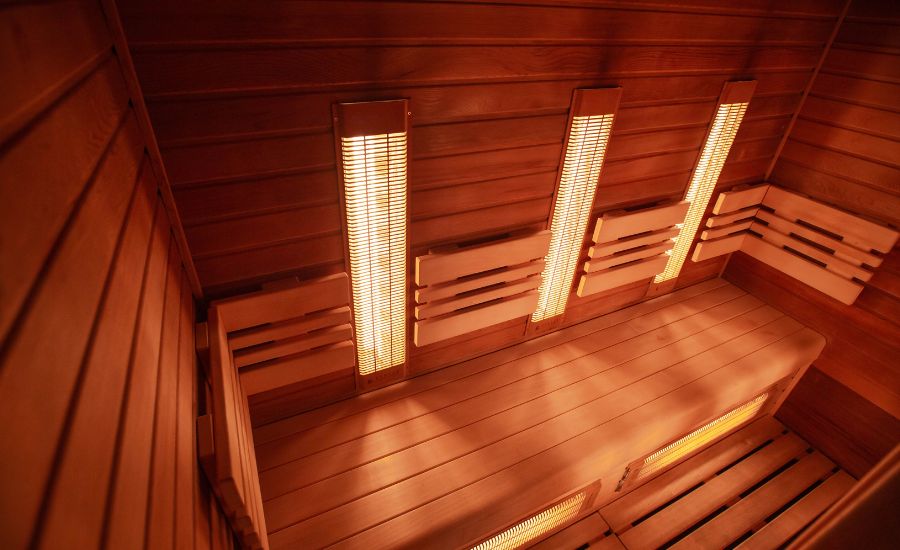
Infrared sauna: overview
Using an infrared sauna has become extremely popular recently and offers a modern touch to the classic sauna experience. As opposed to a typical sauna, which warms the human body indirectly using hot air, an infrared sauna directly warms the body and raises the core body temperature using infrared light.
An infrared sauna is usually confused with other heat therapy rooms, like steam rooms, steam saunas, and a traditional sauna.
It is important to note that they are completely different: a traditional sauna uses electric heaters to heat the air, and an infrared sauna uses an infrared heater or infrared lamps.
Gas is another fuel used in a traditional sauna to heat the sauna chamber and the occupants. An infrared sauna use an infrared heater to emit infrared light, which heats the body’s tissues directly without warming the surrounding air, creating an amazing infrared sauna experience.
The high humidity in a steam room or steam sauna creates a sensation of wetness and heavy moisture on the skin. Breathing is usually easier compared to a steam room due to the lower humidity levels.
The heat from traditional saunas penetrates the body through indirect means by warming the air and surfaces.
When you use the best infrared sauna temperature, infrared light directly penetrates the skin, warming the body at a deeper level and promoting a more intense and efficient sweating experience.
The high temperature and low humidity in traditional saunas can sometimes be uncomfortable, especially for people who have breathing problems or have low heat tolerance.
Infrared saunas offer a more comfortable and delightful experience for many people due to the lower air temperature and more moderate humidity levels.

Benefits of infrared saunas
There are several health benefits of infrared energy that a traditional sauna will not provide. These infrared sauna benefits are explained below.
Detoxification and cleansing
Toxins are substances that can harm the body and disrupt its normal processes. They can enter the body from the environment, diet, and drugs. These toxins build up in tissues and organs over time, possibly leading to health issues.
The process through which the body naturally gets rid of or neutralizes toxins is called detoxification. Important functions in this ongoing process are played by the liver, kidneys, skin, and lungs.
The body’s primary method of toxin release is through sweat. It contains a variety of substances, including heavy metals, which can be effectively expelled from the body through perspiration.
Radiant heat from infrared saunas penetrates the body up to 1.5 inches below the skin’s surface.
The sauna’s temperature raises the core body temperature and causes intense sweating, which aids in the removal of toxins from the body’s tissues.
Compared with traditional saunas, the heat produced in an infrared sauna triggers a more potent and effective sweat response.
Detoxification is more effective in an infrared sauna than a traditional sauna because more toxins are released from the body due to the increased sweating. This and other health advantages are the main reasons why an infrared sauna is preferred over a traditional sauna.

Pain relief and relaxation
Infrared radiation emitted by infrared saunas penetrates the skin deeply and reaches the muscles and joints. This deep heat provides targeted relief for sore muscles, joint pain, and chronic discomfort.
Release of tension, stress, and anxiety from the body and mind is a component of relaxation. It fosters a calm, peaceful, and clear-headed state that is essential for one’s mental and emotional well-being.
Pain is a complicated and varied feeling that can have many different causes including inflammation, traumas, chronic illnesses, and tight muscles.
Effective pain management seeks to reduce suffering, increase mobility, and improve general quality of life.
Joint pain brought on by diseases like arthritis can be eased with the use of an infrared sauna.
Infrared saunas help with increased mobility and decreased discomfort by warming the joints and boosting circulation.
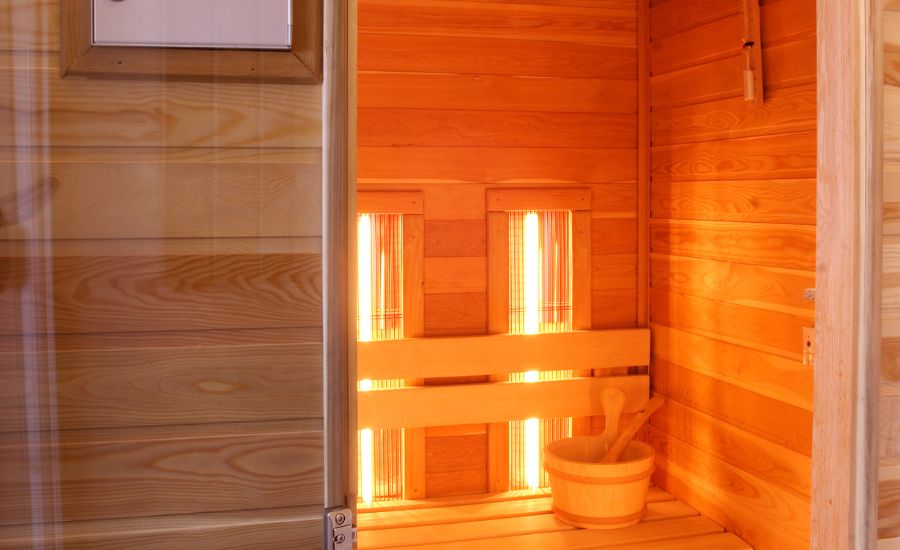
Improved sleep
The deep-penetrating heat of an infrared sauna promotes blood circulation and muscular relaxation. By reducing stress and discomfort, this relaxation can make it simpler for people to enter a peaceful sleep state.
The sleep cycle can be disrupted by sleep disorders, from insomnia to sleep apnea, which can result in exhaustion, cognitive impairment, mood swings, and a higher chance of developing chronic health diseases.
The immune system, hormone regulation, tissue healing, memory consolidation, and other physiological processes all depend on sleep.
Quality sleep is crucial for the best possible daily performance and general health.
An infrared sauna creates a calming environment, inducing relaxation and reducing stress levels.
The warmth envelopes the body, soothing muscles and triggering the release of endorphins, promoting a sense of tranquility conducive to better sleep.
Infrared saunas can help balance the production of sleep-inducing hormones, such as melatonin. Exposure to infrared heat supports the body’s natural flow, contributing to a more consistent sleep-wake cycle.
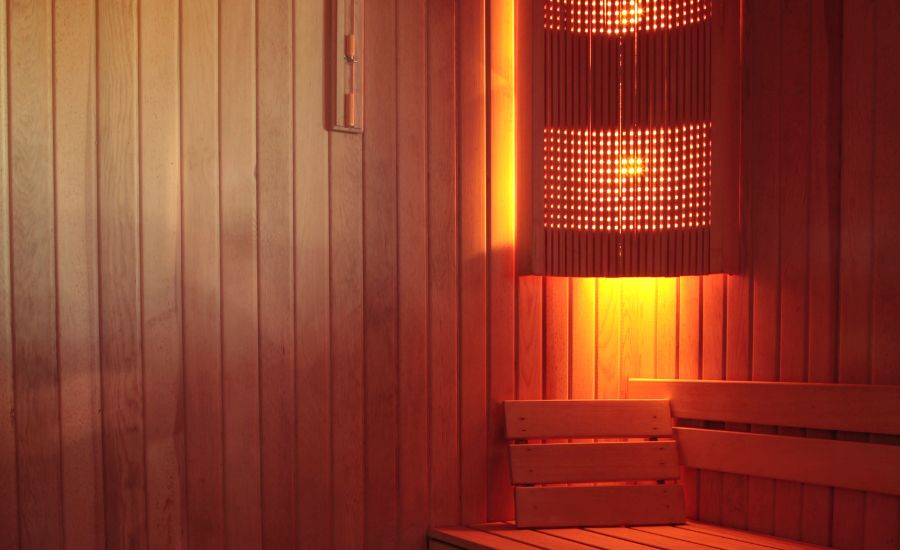
Improved circulation and cardiovascular health
Using an infrared sauna is a promising approach to improve circulation and support cardiovascular health. Infrared saunas produce mild heat that penetrates deeply into the body. This lower temperature in the body improves blood flow and promotes cardiovascular health.
Blood circulates continuously through the heart and blood vessels, carrying nutrition and oxygen while clearing waste from the body’s cells.
All organs and tissues must have adequate circulation to perform at their best.
Infrared saunas emit far-infrared radiation, which penetrates the skin and warms the muscles and tissues. This warmth causes blood vessels to dilate, promoting increased blood flow and better circulation throughout the body.
Regular use of infrared saunas can enhance endothelial function, which refers to the ability of blood vessels to dilate and contract efficiently.
Improved endothelial function is a key marker of cardiovascular health and can aid in preventing conditions like atherosclerosis.
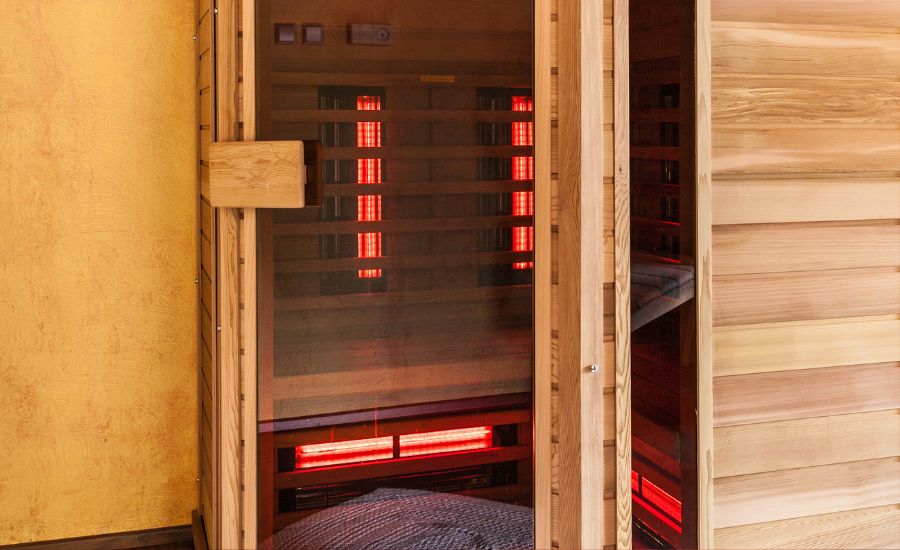
Skin health and anti-aging benefits
Common factors like genetics, UV radiation exposure, lifestyle selections, nutrition, stress, and environmental pollution, all have an impact on skin aging. These elements have the potential to cause fine lines, wrinkles, sagging, and uneven skin tone over time.
An infrared sauna uses invisible infrared light to penetrate the skin, up to 1.5 inches below the surface. This intense heat causes the skin to experience several positive changes.
The heat from infrared saunas encourages improved blood circulation, supplying the skin with essential nutrients, oxygen, and moisture. Improved circulation contributes to a healthy complexion and a youthful glow.
The heat from a sauna stimulates the production of collagen, a vital protein that maintains skin elasticity and firmness. Increased collagen production can help reduce the appearance of wrinkles and fine lines.
The heat also supports cellular repair processes, assisting in the regeneration of skin cells. This rejuvenation can contribute to a more youthful and refreshed appearance.
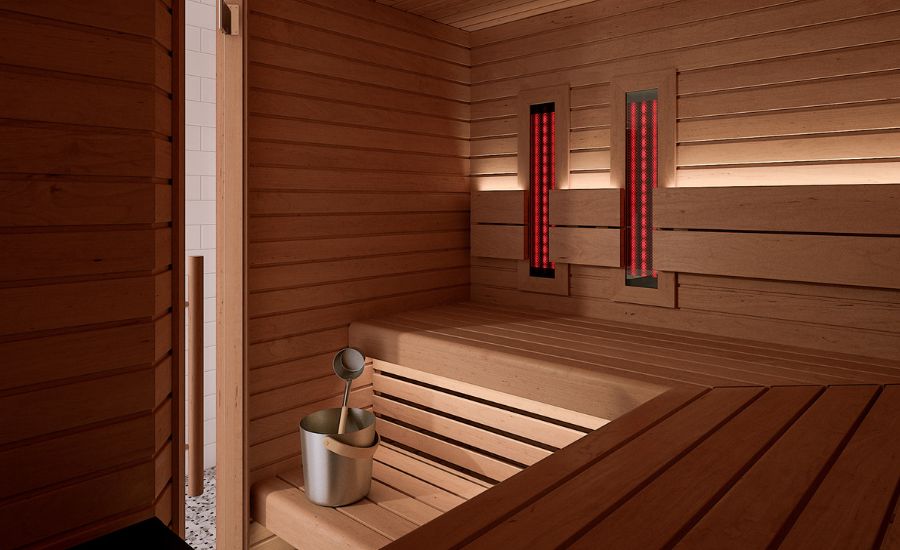
The importance of temperature in infrared saunas
Users can customize the heat in infrared saunas to their comfort and tolerance levels by choosing from the variety of temperature options provided.
An infrared sauna frequently runs at lower temperatures than traditional saunas while still providing an intense heating experience.
The infrared sauna temperature is calibrated to ensure optimal penetration of infrared wavelengths into the body. This deep penetration is crucial for effectively delivering the health benefits an infrared sauna offers that a traditional sauna will not.
The warmth of an infrared sauna stimulates sweating that aids in the body’s removal of toxins and impurities.
Higher temperatures make this process more effective because they raise the core temperature of the body, which promotes cleansing and detoxification. Lower temperatures in an infrared sauna are essential for comfortable and relaxing sauna sessions.
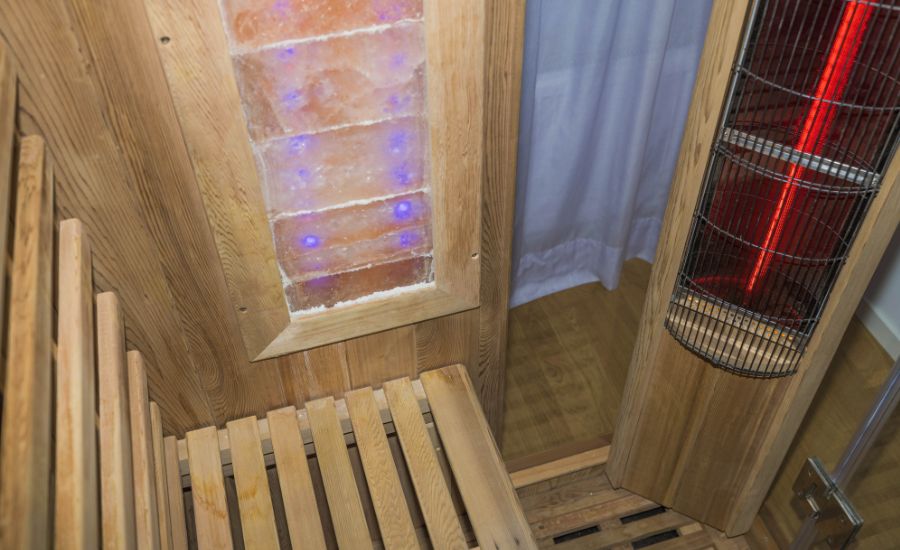
How hot should the sauna be?
Because everyone’s tolerance for heat differs, what one person may find to be comfortable may be too hot or cold for another person. You must choose a temperature that is both comfortable for you and allows you to have a relaxing and enjoyable sauna experience.
Heat intensity and dispersion in a sauna can be influenced by the size and location of the infrared heaters. Properly positioned heaters and adequate output ensure a uniform and efficient heating experience.
The best temperature for infrared sauna ranges between 120°F and 150°F (49°C and 65°C). Within this range, users can adjust the temperature based on their preferences and get maximum health benefits during their sauna sessions.
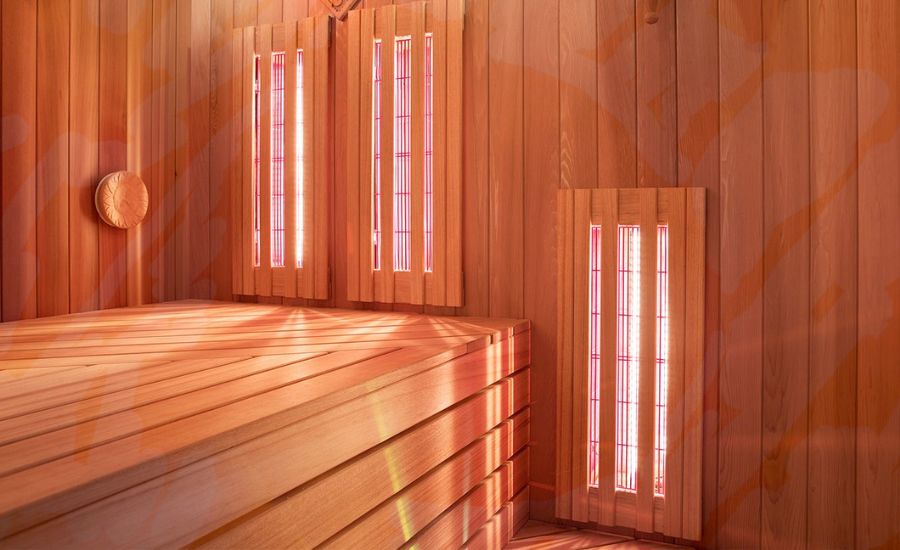
Recommended temperatures for different needs
An infrared sauna provides a customizable heat experience, allowing users to select the infrared sauna temperature that aligns with their health goals and preferences. The various infrared sauna temperatures offer different advantages.
Relaxation: a temperature range of 110°F – 130°F is the best temperature for infrared saunas when it comes to relaxation and stress reduction. These lower temperatures are well-suited for individuals seeking a soothing and peaceful sauna session.
Cleansing: the ideal sauna temperature for cleansing is 145°F, the lower temperature induces sweating, promoting the elimination of toxins and impurities from the body. This temperature range is ideal for individuals looking to enhance their body’s natural detoxification process and rejuvenate their system.
Pain relief: a sauna temperature of 140°F is perfect for pain relief. Deep heat penetrates the muscles, easing stiffness, soreness, and chronic pain.
This is the best infrared sauna temperature for athletes, people recovering from injuries, or anyone with tense muscles.
Weight loss: the recommended temperature range for weight loss is 135°F – 150°F. Higher temperatures boost metabolism and calorie expenditure, aiding in weight management. The extreme heat increases the skin temperature and intensifies the sauna experience, causing intense sweat and supporting weight loss goals.
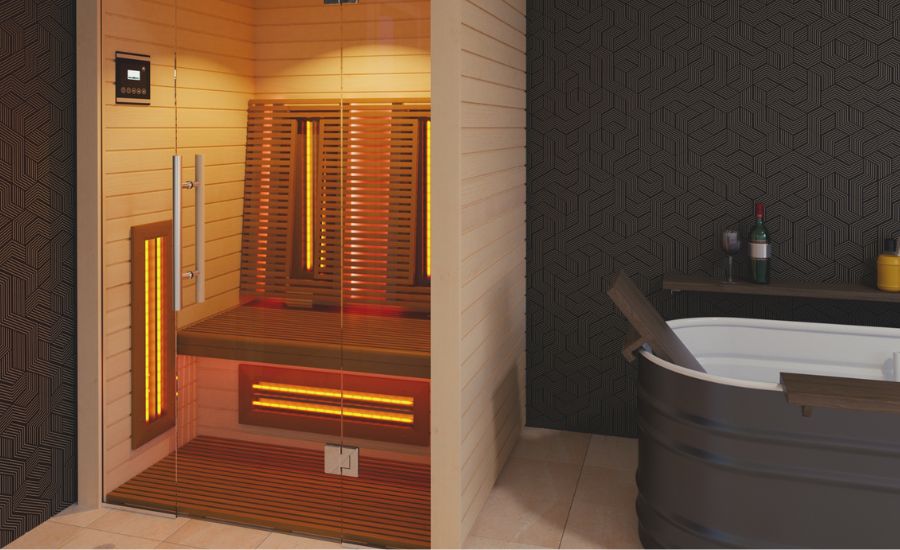
Safety tips for an infrared sauna
- Stay hydrated: to avoid dehydration, drink a lot of water before and after the sauna session. Infrared saunas induce sweating, and adequate hydration is crucial to maintain body fluids.
- Distance: keep a safe distance away from the infrared heaters to avoid coming in contact with them and to avoid potential burns.
- Use a timer: to make sure you don’t spend more time than intended in the sauna, you should set a timer. This minimizes the chance of unintentional overexposure to a lower temperature.
- Monitor your body: pay attention to how your body feels during the session. If you start feeling dizzy, lightheaded, nauseous, or uncomfortable, exit the sauna immediately and cool down.

FAQ
What temperature should I set in my infrared sauna?
The infrared sauna temperature you use depends on your particular goal. 135°F is an ideal temperature for weight loss while 120°F is considered the best temperature for infrared sauna relaxation.
Is 140 hot enough for an infrared sauna?
A temperature of 140°F is a great infrared sauna temperature, however, your personal best infrared sauna temperature is determined strictly by your goal.
Is 30 minutes in infrared sauna enough?
Yes, spending 30 minutes in an infrared sauna is enough. The duration you use in an infrared sauna should, however, be determined by your goal.
How long should you sit in an infrared sauna?
The duration for sitting in an infrared sauna is based on factors like tolerance to heat and wellness goals. The average time recommended is 25 minutes.
Conclusion
Finding the perfect infrared sauna temperature for your infrared sauna session involves considering all relevant factors to maximize comfort and health benefits during your session. By considering your tolerance to heat and using this article as a guide, you can choose the perfect temperature to enjoy an amazing infrared sauna session.

